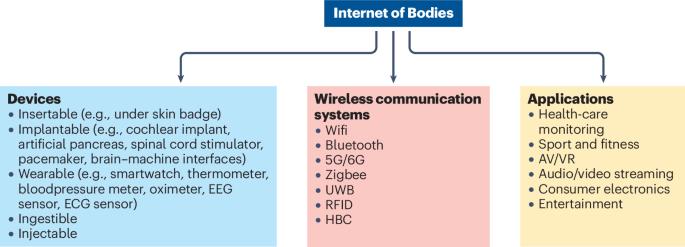Human body communication transceivers
引用次数: 0
Abstract
Although advances in medical technology have facilitated access to treatments and preventative protocols, health care remains constrained by frequent, multiple doctor visits, disrupting daily routines and burdening medical infrastructure. The Internet of Bodies offers a transformative solution by integrating wearable, implantable, ingestible and injectable devices in, on and around the body and thus enabling seamless connectivity in biomedical applications. Since the term was first introduced in the mid-1990s, the Internet of Bodies has made notable progress owing to advances in miniaturized electronics, flexible substrates and low-power design. A critical component of this development is the introduction of human body communication (HBC), which uses the human body as a transmission medium. By replacing the radio front-end with simple direct skin interfaces, sensing and communication modules become smaller, lighter, more energy-efficient and accessible. In this Review, we focus on the role of HBC transceivers for next-generation health-care and body-area networks. We discuss the fundamental principles of HBC, including signal propagation, channel modelling and performance trade-offs. Key design challenges such as dynamic channel variations, skin–electrode interfaces, interference, safety regulations and energy efficiency are analysed. Additionally, we explore the circuit design techniques that affect HBC performance and adaptability. Advancements in miniaturized electronics, low-power design and deep-learning-driven transceiver architectures are needed to further unlock the potential of HBC systems, paving the way for their widespread adoption in personalized health-care and secure body-centric communication systems. By exchanging messages using the human body as a communication medium, human body communication offers a mean to design low-power, miniature Internet of bodies nodes. Accurate channel modelling and low-power strategies are key to HBC widespread adoption.

人体通讯收发器
尽管医疗技术的进步促进了获得治疗和预防方案的机会,但由于频繁、多次看医生,扰乱了日常生活,给医疗基础设施造成负担,保健仍然受到限制。身体互联网提供了一种变革性的解决方案,将可穿戴、可植入、可摄入和可注射的设备集成在身体内部、身体上和身体周围,从而实现生物医学应用的无缝连接。自20世纪90年代中期首次提出该术语以来,由于微型化电子产品、柔性基板和低功耗设计的进步,物联网取得了显著进展。这一发展的一个关键组成部分是引入人体通信(HBC),它使用人体作为传播媒介。通过用简单的直接皮肤接口取代无线电前端,传感和通信模块变得更小、更轻、更节能、更容易使用。在这篇综述中,我们重点讨论了HBC收发器在下一代医疗保健和体域网络中的作用。我们讨论了HBC的基本原理,包括信号传播、信道建模和性能权衡。关键的设计挑战,如动态通道变化,皮肤电极接口,干扰,安全法规和能源效率进行了分析。此外,我们还探讨了影响HBC性能和适应性的电路设计技术。需要在微型化电子、低功耗设计和深度学习驱动的收发器架构方面取得进展,以进一步释放HBC系统的潜力,为其在个性化医疗保健和安全身体中心通信系统中的广泛采用铺平道路。通过以人体作为通信媒介交换信息,人体通信为设计低功耗、微型身体互联网节点提供了一种手段。准确的信道建模和低功耗策略是HBC广泛采用的关键。
本文章由计算机程序翻译,如有差异,请以英文原文为准。
求助全文
约1分钟内获得全文
求助全文

 求助内容:
求助内容: 应助结果提醒方式:
应助结果提醒方式:


